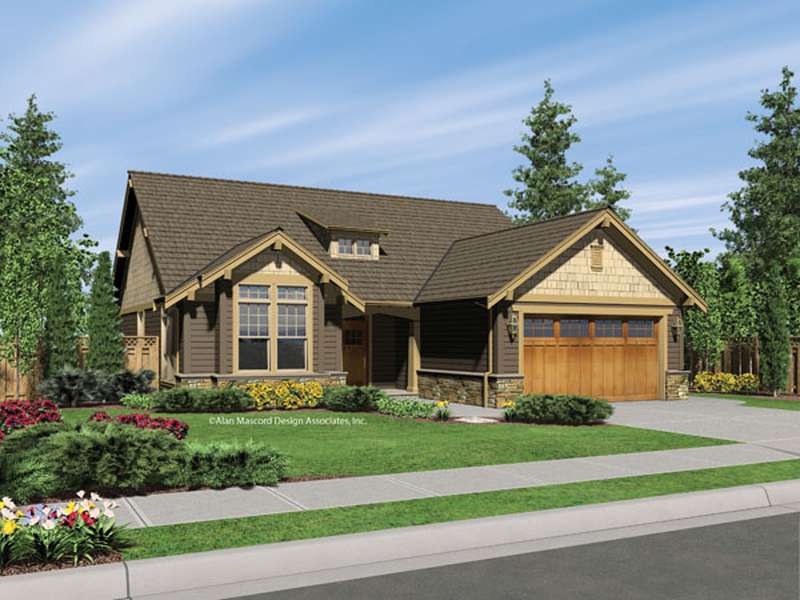Craftsman House Plans: Standing the Test of Time
All Categories
About Our Plans Building a Home Building Your Home Green Building Help and Support Hobbies & Recreation Home Building Tips and Information Home Design Home Exterior & Framing Homepage Articles House Plan of the Week How We Work Ideas and Inspiration Industry News Infographics Information & Resources Inspired Spaces Interior Design Kitchens Mascord News Modified Home Designs Outdoor Living Personal Stories Plan Support Products and Services Real Estate Remodeling & Renovating Showstoppers
Craftsman house plans first came into vogue around the turn of the 20th century as affordable, solid homes for working-class families. Indeed, the name “Craftsman” probably stems in part from the fact that the homeowners often built some or all of their own homes by hand. The cozy yet sturdy homes these laborers built – sometimes from Sears Roebuck kits! – were simple, quaint and durable. In contrast, the contemporary Victorian homes of the upper crust were often built from mass-produced materials.
Some of the architectural elements found in Craftsman-style homes (sometimes called “prairie homes” in the Midwest) are dormer windows, wide roof overhangs, porches with tapering columns, and small building footprints overall.
Today, Craftsman home plans are seeing renewed popularity. If you’re in love with the Craftsman look but your town doesn’t have many original specimens of this building style, have no fear – home designers are happy to create custom Craftsman home plans for you, or you can simply select from any number of pre-designed Craftsman house plans.
Why Craftsman House Plans are Increasingly Popular among Homeowners
1. Craftsman house plans are classic, with modern conveniences.The Craftsman style is clean, with simple, elegant lines. Craftsman homes often feature horizontal bands in siding, for instance. These well-made homes often feature plenty of woodwork, too, which is popular for its warmth and beauty.
2. Open floor plans. To maximize space, Craftsman home plans often combine the kitchen, living room and dining room into one large shared space. Homebuyers like this design because it makes any home feel larger, while also encouraging family togetherness.
3. Unique woodwork and built-in storage. Another space-saving measure many Craftsman house plans include: built-in cabinets and bookcases. Homebuyers love this feature for the natural organization it provides.
4. Eco-friendly. Traditionally, Craftsman homes were built using locally acquired materials, mainly wood. Moreover, Craftsman homes are often compact and require a smaller carbon footprint than other home styles. All three of these characteristics are popular with environmentally-minded homebuyers; wood is renewable, a smaller carbon footprint means less pollution, and local building materials save fuel that would be used for transportation.
5. Less expensive to build.Some of the earth-friendly traits listed above are also budget-friendly. A smaller building footprint means lowered construction costs. Finally, local building materials are often less expensive, since lower transportation costs are involved.
These are only a few of the reasons why many of today’s homeowners choose Craftsman home plans.
Note: The home shown above is The Granville House Plan 1103BA.
